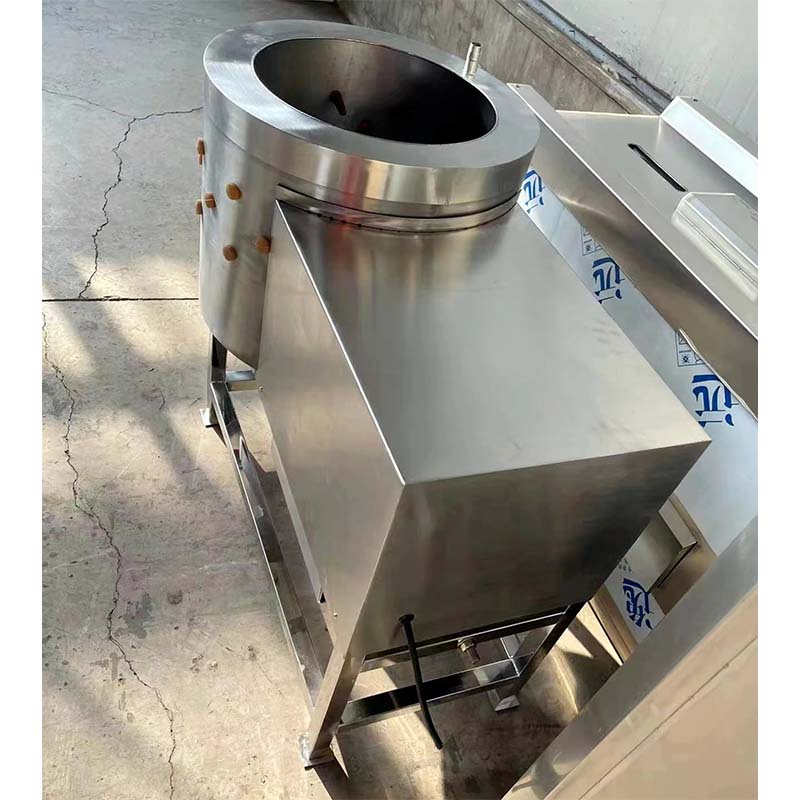vertical feed mixer
វិច្ឆិកា . 05, 2024 19:17 Back to list
vertical feed mixer
Understanding Vertical Feed Mixers An Essential Tool for Modern Agriculture
In the fast-paced world of modern agriculture, efficiency and precision are pivotal for maximizing productivity. One tool that has gained significant attention for its effectiveness in livestock nutrition management is the vertical feed mixer. This versatile piece of equipment is revolutionizing the way farmers prepare and distribute feed, resulting in healthier animals and improved yields.
What is a Vertical Feed Mixer?
A vertical feed mixer is a type of agricultural equipment designed to blend various types of feed ingredients into a homogenous mix. Unlike horizontal mixers, vertical mixers utilize a vertical auger, which rotates within a vertical chamber, effectively combining ingredients from the bottom to the top. This unique design allows for a thorough mixing process, ensuring that each nutrient is evenly distributed throughout the feed.
Key Features and Benefits
1. Efficiency in Mixing Vertical feed mixers are known for their efficiency in processing various feed components, including silage, hay, grains, and supplements. Their design allows for quick and thorough mixing, which is crucial when preparing rations for large herds.
2. Versatility One of the standout features of vertical mixers is their ability to handle a wide range of materials. Farmers can easily include dry, wet, and fermented ingredients, which broadens the options for balanced animal nutrition. This versatility supports the formulation of customized rations tailored to the specific needs of different livestock species.
3. Reduced Feed Waste The even mixing capabilities lead to less segregation of ingredients, thereby reducing overall feed waste. This not only maximizes the efficiency of feed use but also contributes to cost savings for farmers.
vertical feed mixer

4. Improved Animal Health A uniform diet is essential for optimal animal growth and health. With a vertical feed mixer, farmers can ensure that each animal receives the right balance of nutrients, leading to better overall health, increased milk production in dairy cows, and improved weight gain in livestock.
5. Ease of Operation Many modern vertical feed mixers are equipped with advanced technology, including electronic controls and automated systems. These features simplify the mixing process, allowing operators to input specific recipes and monitor performance with ease.
6. Durability and Reliability Constructed from robust materials designed to withstand the rigors of agricultural use, vertical feed mixers are built for longevity. Regular maintenance is straightforward, ensuring that farmers can rely on their equipment for years to come.
The Economic Impact
Investing in a vertical feed mixer can also have significant economic benefits for farmers. By reducing feed costs through efficient mixing and minimizing waste, farmers can see an increase in their bottom line. Moreover, healthier animals lead to enhanced productivity, further contributing to the profitability of the operation.
Conclusion
In summary, vertical feed mixers represent a game-changing innovation in livestock feed management. Their efficient design, versatility, and ability to improve animal health make them an indispensable tool for today’s farmers. As agriculture continues to evolve, embracing advanced technologies like vertical feed mixers will undoubtedly play a key role in meeting the growing demands of food production. For farmers looking to improve their operations, investing in this robust and efficient equipment could be the decision that leads to greater productivity and sustainability in their farming practices.
With ongoing advancements in technology and an emphasis on precision agriculture, vertical feed mixers are poised to become even more integral to the future of farming. They not only support animal welfare and health but also promote sustainable practices that benefit the environment and the economy alike. As the industry continues to innovate, the importance of such equipment cannot be overstated, highlighting a promising pathway towards efficient and responsible agricultural practices.
-
High Performance Exhaust Fan – Efficient Ventilation Solutions for Home
NewsJun.10,2025
-
High-Quality Gestation Pen for Sows Durable Mobile Pig Pen & Simple Pig Pen Solutions
NewsJun.10,2025
-
High Quality Rabbit Cage Double Tier Designs & Welded Wire Mesh Supplier
NewsJun.10,2025
-
Floating Fish Feed Machine - High Efficiency Floating Fish Feed Extruder for Small Scale Production
NewsJun.10,2025
-
Premium Poultry Housing Solutions Mobile & Commercial Free Range Options
NewsJun.10,2025
-
Industrial FRP Fans Corrosion-Resistant Blades & Centrifugal Systems
NewsJun.09,2025






